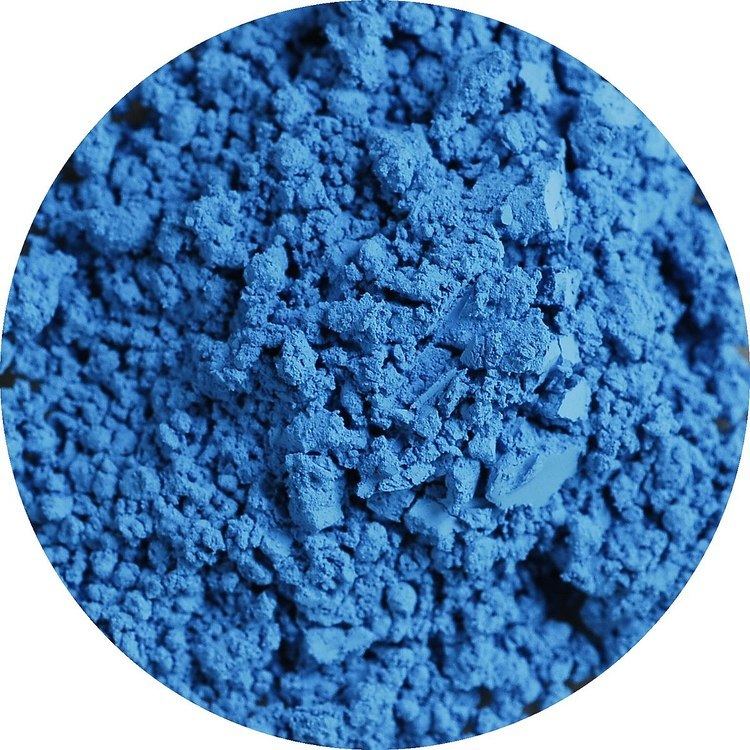Hex triplet #007BA7 CMYK (c, m, y, k) (100, 26, 0, 35) | sRGB (r, g, b) (0, 123, 167) HSV (h, s, v) (196°, 100%, 65%) | |
 | ||
Cerulean (/səˈruːliən/), also spelled caerulean, is a color term that may be applied to certain colors with the hue ranging roughly between blue and cyan, overlapping with both. It also largely overlaps with azure and sky blue, although cerulean is dimmer.
Contents
- Use in artistic painting
- Cerulean blue
- Cerulean blue pigment
- Pale cerulean
- Bright cerulean
- Cerulean frost
- In nature
- In human culture
- References
The first recorded use of cerulean as a color name in English was in 1590. The word is derived from the Latin word caeruleus, "dark blue, blue, or blue-green", which in turn probably derives from caerulum, diminutive of caelum, "heaven, sky".
Use in artistic painting
In classical times, cerulean was used to describe blue pigments, particularly mixtures of copper and cobaltous oxides, like azurite and smalt. These early attempts to create sky blue colors were often less than satisfactory due to a limited saturation and the tendency to discolour in reaction with other pigments. When the pigment cerulean blue (shown in the color box to the left) was discovered, it became a useful addition to Prussian blue, cobalt blue and synthetic ultramarine which already had superseded the prior pigments. See also Tekhelet.
Cerulean blue
At right is displayed the color cerulean blue.
The first recorded use of cerulean blue as a color name in English was in 1859.
Pigments through the ages shows a "Painted swatch of cerulean blue" that is representative of the actual cobalt stannate pigment. This color swatch matches the color shown in the color box at right. See also painted swatch and crystals of cerulean blue at ColourLex.
Cerulean blue pigment
Cerulean blue was discovered in 1789 by Albrecht Höpfner. Subsequently there was a limited German production under the name of Cölinblau. It was in 1860 first marketed in the United Kingdom by colourman George Rowney, as "coeruleum". Other nineteenth century English pigment names included "ceruleum blue" and "corruleum blue". The primary chemical constituent of the pigment is cobalt(II) stannate. The precise hue of the pigment is dependent on a variable silicate component. The pigment is very expensive.
It is particularly valuable for artistic painting of skies because of its hue, its permanence, and its opaqueness. Berthe Morisot painted the blue coat of the woman in her "A Summer's Day', 1879 in cerulean blue in conjunction with artificial ultramarine and cobalt blue.
Today, cobalt chromate is sometimes marketed under the cerulean blue name but is darker and greener (Rex Art color index PB 36) than the cobalt stannate version (color index PB 35). The chromate makes excellent turquoise colors and is identified by Rex Art and some other manufacturers as "cobalt turquoise".
Pale cerulean
Pantone, in a press release, declared the pale hue of cerulean at right, which they call cerulean, as the "color of the millennium".
The source of this color is the "Pantone Textile Paper eXtended (TPX)" color list, color #15-4020 TPX—Cerulean.
Bright cerulean
This bright tone of cerulean is the color called cerulean by Crayola crayons.
Cerulean frost
At right is displayed the color cerulean frost.
Cerulean frost is one of the colors in the special set of metallic colored Crayola crayons called Silver Swirls, the colors of which were formulated by Crayola in 1990.
